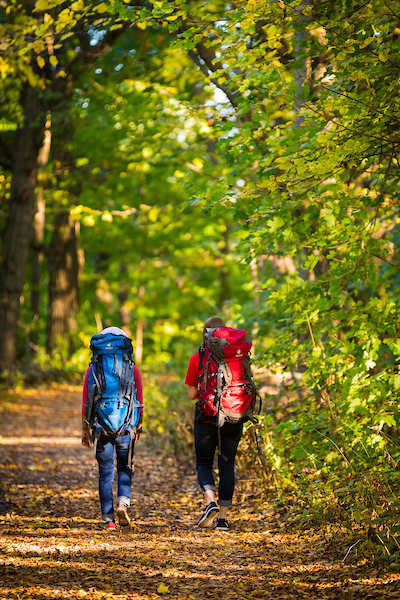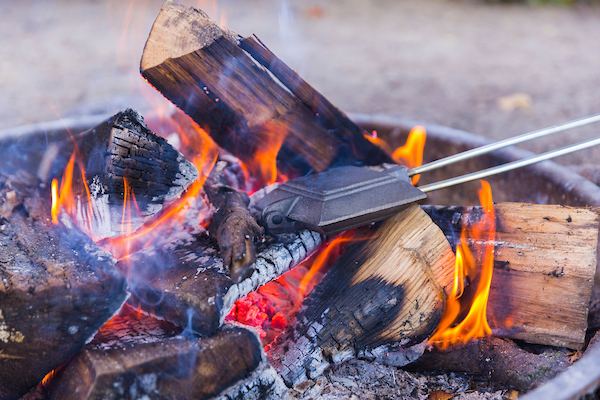Outdoor Adventure Tips and Ways to Prepare for Outdoor Adventures
Outdoor explorers and explorers-to-be, adventure awaits you in Wisconsin’s outdoors, and our team at Outdoor UW wants to help you build the skills for your next excursion.
Outdoor UW offers courses through the Outdoor Explorer Series for outdoor enthusiasts and soon-to-be enthusiasts at every level of their adventuring. In this story, we’re sharing some outdoor tips as you consider your next venture into nature as well as some Series events to check out.
- Get Cookin’ – Sure, you can pack the classic peanut butter and jelly sandwiches or make granola ahead of time (Go for it!), but how about a warm meal at the end of your beautiful day outside? You can do it! Want to include fruits and vegetables in your wilderness cooking? You absolutely can use some simple dehydration methods with some planning ahead. Don’t bring canned foods and leave your trip with an aching back from your heavy pack; learn with us about how to elevate your culinary prowess on your next backcountry adventure.
By the way, we suggest you make your s’mores extra special by replacing those boring graham crackers with our s’mores cookies (made before your trip). Here’s our recipe for this treat: https://union.wisc.edu/dine/union-dining-at-home/copycat-smores-cookie/. Chocolate and marshmallows get even better with more chocolate and more marshmallows. Plus, it’s easier to eat than the crackers.
Now that you’ve had a taste of outdoor cooking, check out the learning opportunity Outdoor Introduction: Backcountry Cooking and Nutrition on March 29. You’ll learn about planning a diet that takes into account your energy use while in the outdoors, micro and macro nutrients, planning rations, cooking supplies and cooking methods.
- Build a Fire – Building a fire in the wilderness is an art and science. On a cold night camping, there may be nothing more comforting than a fire crackling; the wafting scent of mellow, sweet burning wood and the taste of the ooey, gooey, sugary splendor of a marshmallow with just the right amount of toasty brown goodness roasted over the fire.
Here’s a tip to make your fire-making experience easier: Your tinder is the material that will ignite and get your fire started strong. Lots of kinds of materials can work. For your tinder, you can gather small sticks, dry leaves and grass, dry pine needles, and inner bark from dead trees. You can get creative with gathering natural tinder sources with the keys being that your materials are dry but not rotten and light.
Learn more about building a fire in the outdoors at Outdoor UW’s Outdoor Introduction: Backcountry Fire Building on April 12. At this session, you’ll also learn how to minimize your campfire’s impact on nature.
- Start your Bikepacking Adventures – You read that correctly: BIKE packing, not backpacking. Bikepacking is a great way to explore with a faster mode of transportation than your feet. It’s simply the act of biking, usually on a multi-day excursion, with everything you need on your bike. Typically, bikepacking means traveling unpaved paths, but, hey, this is your journey, and you get to define it. One thing to remember as you prepare for your trip is to bring bike repair supplies. You never know when a chain will come loose or a flat tire will interrupt your day. Being prepared with tools and repair supplies can mean the difference between ending your trip or just a short delay in your travels.
Get prepared for bikepacking by registering for Outdoor Introduction: Bikepacking, which Outdoor UW will host on April 26. At this event, you’ll learn more about this popular way to explore the outdoors, some Madison area bikepacking areas, bikepacking gear, and how to stay nourished and hydrated during your trip.
- Fishing – A great way to spend your time in the outdoors, enjoy beautiful lakes and rivers, AND source your next meal: fishing. It’s a chance to slow down and truly take in the scenery. Something to keep in mind: often, the best times to fish are at sunrise and sunset. And what a beautiful way to start or end your day, taking in the watercolor painting nature creates across the sky while waiting for that tug on your fishing line. Looking for bait? Make sure to turn over rocks where worms may be found. Hitting the ground may also cause worms to surface from the dirt. Want to try truly tricking a fish? Use dry or wet fly, which are most often used by fly fishing anglers. Either way, backcountry fishing is a great way to connect with nature and doesn’t require much gear. Come learn how to add this activity to your next backcountry adventure.
Check out Outdoor UW’s Outdoor Introduction: Backcountry Fishing on April 19. There, you’ll have hands-on practice with portable fishing equipment, find out about different types of fishing, and learn where fish hide in a river as well as how to clean and cook fish.


